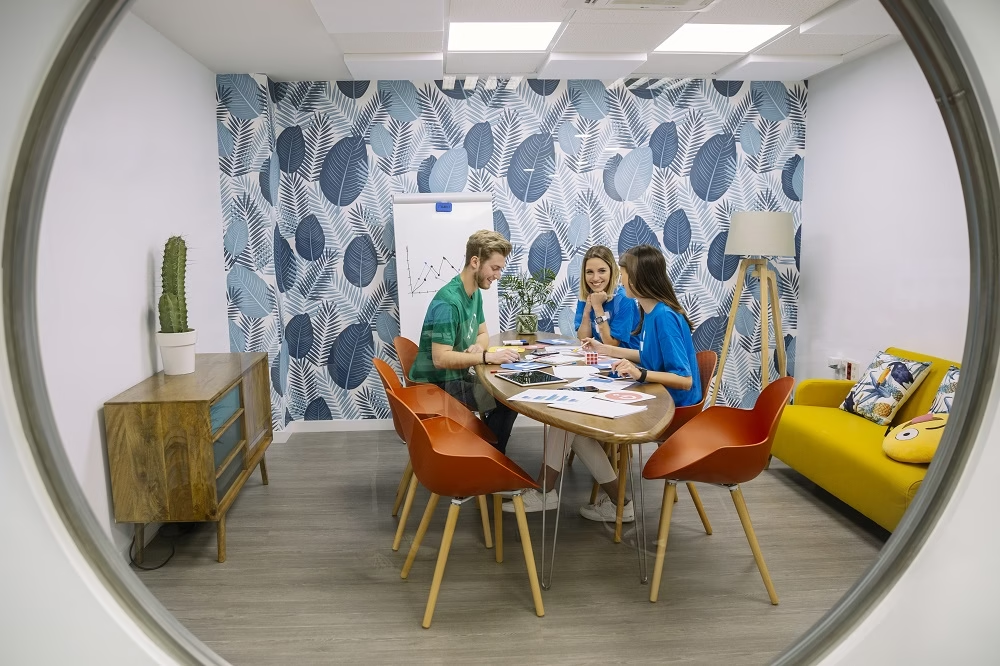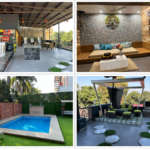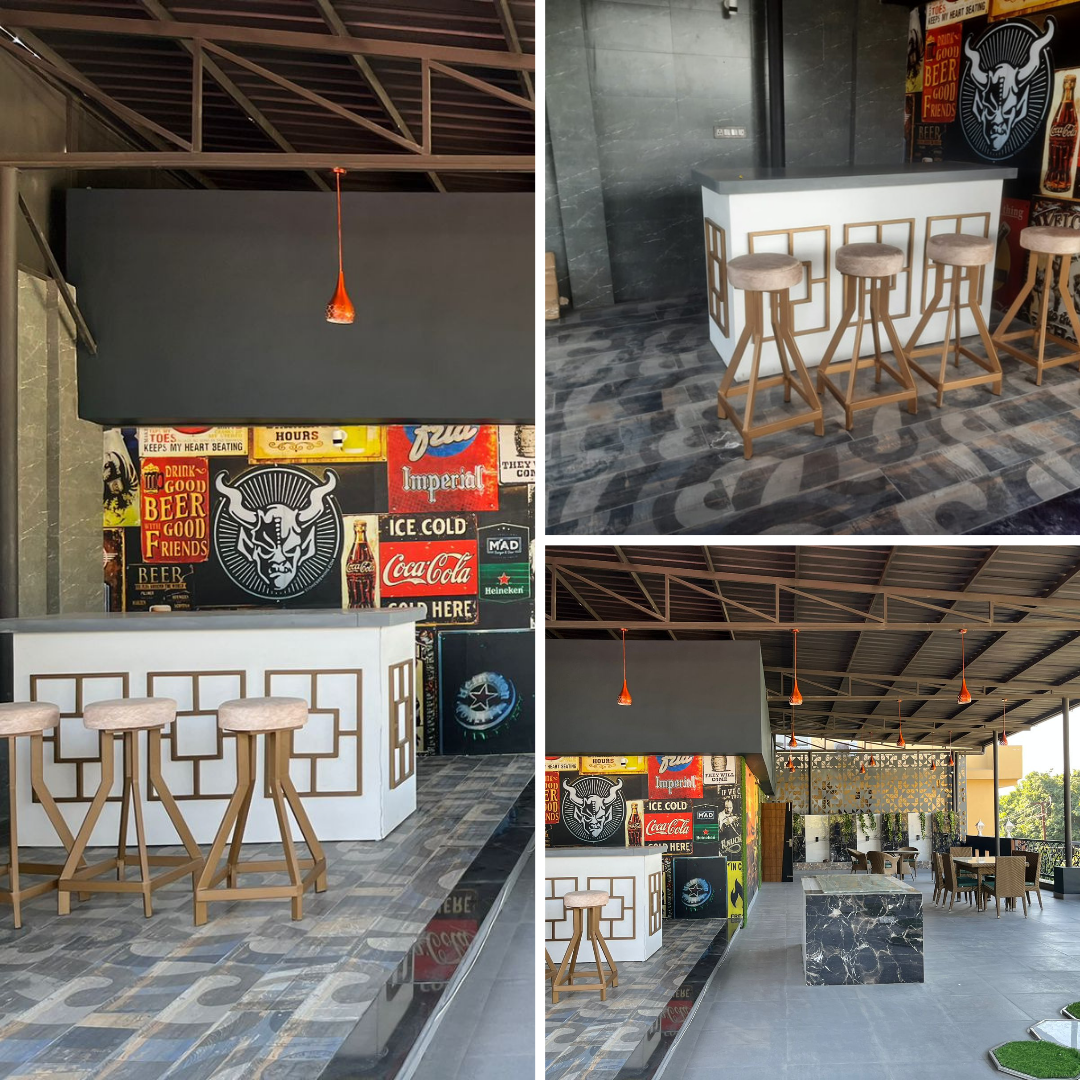Designing for Neurodiversity: An Inclusive Office Guide
- Amodini Systems
- 0 Comments
Neurodiversity means the idea that people experience and interact with the world in different ways. Everyone’s brain works differently. Some people think, learn, and process information in unique ways. These differences are not problems — they are part of human diversity.
In a workplace, neurodiversity includes individuals with conditions such as autism, ADHD, dyslexia, dyspraxia, Tourette syndrome, and others. These employees may have exceptional attention to detail, creativity, and problem-solving skills. However, they may also face challenges with sensory overload, social interactions, or focus in a typical office setup.
Designing for neurodiversity is about creating a workspace where all employees — regardless of how their brains function — can perform comfortably and effectively. It focuses on building an inclusive environment that reduces stress, increases productivity, and supports everyone’s strengths.
Why Inclusive Office Design Matters
Many workplaces are designed for “neurotypical” people — those who process information in the most common way. But this approach can make it difficult for neurodiverse individuals to thrive. A bright, noisy, and crowded office may overwhelm someone with sensory sensitivities. Similarly, lack of private space may make it hard for people who need focus to do deep work.
Inclusive office design ensures that the workspace supports everyone’s needs. When employees feel comfortable and accepted, they are more engaged, creative, and productive. Inclusion is not just an act of kindness — it is a smart business decision.
Research shows that neurodiverse teams often outperform others in problem-solving and innovation. So, creating an inclusive office isn’t only about accessibility; it’s about building a stronger and more successful organization.
Key Principles of Designing for Neurodiversity
Designing for neurodiversity means going beyond standard office design. It focuses on flexibility, comfort, and sensory balance. Here are the main principles that guide inclusive office design:
1. Flexibility in Workspaces
One of the most important aspects of inclusive design is flexibility. Not every employee works best in the same environment. Some may prefer quiet areas, while others thrive in open and collaborative spaces.
To support everyone, offices should offer a mix of different zones:
-
Quiet zones for focused work
-
Collaboration areas for teamwork
-
Breakout spaces for relaxation and informal meetings
This flexible design allows employees to choose where they work best. It gives them control over their environment, which can greatly reduce stress and improve focus.
2. Control Over Sensory Elements
Neurodiverse individuals may have different sensory needs. For example, someone with autism may be sensitive to bright lights or loud noises, while another person may need visual stimulation to stay engaged.
To accommodate these differences, offices should allow control over sensory elements like:
-
Lighting: Use dimmable lights or natural light wherever possible. Avoid harsh fluorescent lighting.
-
Sound: Provide noise-canceling areas, soft furnishings, or acoustic panels to reduce echo.
-
Temperature: Ensure that heating and cooling systems are adjustable for comfort.
A good design respects that everyone experiences the environment differently. By giving employees control, you create a more inclusive atmosphere.
3. Use of Calm and Natural Colors
Colors can strongly affect how people feel and think. Bright colors may energize some but distract others. Soft, natural, and neutral tones — like greens, blues, and beiges — tend to create a sense of calm and focus.
Designers should avoid overly bright or flashing colors, especially in meeting rooms or work zones. Instead, color can be used strategically to create visual order. For example, soft blue in focus areas and green in relaxation zones can subtly guide employees without overwhelming them.
4. Clear Layout and Wayfinding
A confusing office layout can cause anxiety or frustration for some people, especially those with ADHD, dyslexia, or autism. Clear navigation and organization make the environment easier to understand and move through.
Designers can support this by:
-
Using clear signage with both text and icons
-
Avoiding clutter in hallways and desks
-
Creating predictable layouts that are easy to navigate
An organized office helps everyone, not just neurodiverse individuals, stay calm and efficient.
5. Private Spaces and Quiet Rooms
Some employees may find open offices distracting or overwhelming. Providing private spaces where people can work quietly or decompress is essential.
Quiet rooms can serve multiple purposes — a place to relax, think, or recover from sensory overload. These areas can be equipped with comfortable seating, soft lighting, and calming colors. Even small private booths or pods can make a big difference in employee comfort.

Practical Examples of Inclusive Office Design
To better understand how these ideas work in real life, let’s look at a few examples of design elements that support neurodiversity.
| Design Element | Purpose | Benefit for Neurodiverse Employees |
|---|---|---|
| Acoustic Panels | Reduce noise and echo | Helps those with sound sensitivity |
| Adjustable Lighting | Allow brightness control | Reduces visual strain and stress |
| Flexible Seating Options | Mix of desks, pods, and lounges | Supports different work styles |
| Natural Elements (plants, sunlight) | Add calm and balance | Creates a relaxing environment |
| Quiet Rooms or Pods | Provide private, silent space | Helps regain focus or calmness |
| Clear Signage and Labels | Easy navigation | Reduces confusion and anxiety |
This table shows how simple design changes can make a big difference in employee experience.
Technology and Tools for Inclusive Offices
In addition to physical design, technology plays a big role in supporting neurodiversity. Digital tools can make communication and task management easier for everyone.
Some helpful tools include:
-
Noise-canceling headphones for focus
-
Screen filters to reduce glare
-
Task management apps that simplify scheduling and reminders
-
Voice recognition software for employees who struggle with typing
-
Color contrast settings on computers for better readability
These small adjustments make the workplace more accessible and supportive for different needs.
Training and Awareness: The Human Side of Inclusion
Design alone isn’t enough. For a truly inclusive workplace, employees and leaders must understand neurodiversity. Awareness training can help team members learn how to communicate and collaborate with neurodiverse colleagues respectfully.
Simple practices such as:
-
Giving clear instructions
-
Allowing flexible deadlines
-
Avoiding sudden changes in tasks
can make a huge difference in reducing stress and confusion.
When people understand that everyone’s brain works differently, it builds empathy, teamwork, and respect. A welcoming culture combined with inclusive design creates a powerful foundation for success.
The Benefits of a Neurodiverse Workplace
A neurodiverse workforce brings many benefits to an organization. Companies that value inclusion report higher productivity, innovation, and employee satisfaction.
Some major advantages include:
-
Creative Problem-Solving: Different minds think differently, leading to unique ideas and solutions.
-
Higher Employee Retention: Inclusive environments make employees feel valued and supported.
-
Improved Reputation: Companies known for inclusivity attract top talent.
-
Increased Productivity: Comfortable employees work more efficiently and with greater focus.
By supporting neurodiverse employees, organizations also improve their workplace for everyone else. A well-designed, inclusive office benefits all kinds of thinkers and workers.
How to Start Designing for Neurodiversity
If your company wants to make the workplace more inclusive, start small but start right. Here are a few steps to begin:
-
Assess the current environment — identify what causes stress or discomfort.
-
Ask for feedback from employees about their needs.
-
Redesign spaces gradually — add quiet zones, better lighting, or clearer signage.
-
Train managers and staff to understand neurodiversity.
-
Monitor and improve — continue adjusting based on feedback and performance.
Inclusive design is a journey, not a one-time project. Continuous improvement ensures that every employee can work comfortably and confidently.

Conclusion:
Designing for neurodiversity is about more than just furniture or lighting — it’s about understanding people. Every employee deserves a workspace that supports their needs and allows them to perform their best.
An inclusive office is a place where creativity, comfort, and productivity come together. By embracing flexibility, sensory balance, and awareness, organizations can create workplaces that truly reflect human diversity.




















